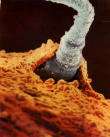Artificial Insemination

Artificial Insemination With Husband's (or Partner's) Sperm (A.I.H)
Hundreds of couples in Australia seek Artificial Insemination fertility treatments each year – and this figure is increasing rapidly. Artificial Insemination may help you to achieve a pregnancy.
Semen that has been washed and treated is inserted into the cervix. Where sperm quality is lower, sperm are inserted higher up the reproductive tract to reduce the distance they have to travel to reach the egg (oocyte).
Artificial Insemination fertility treatments may be useful if couples have any of the following male or female infertility factors:
- Problems with intercourse, but potentially normal sperm production
- Abnormal seminal fluid or
- Hostile cervical mucus
Artificial Insemination Treatment Procedure
On the first day of her cycle, the woman will be asked to make an appointment with her fertility specialist to have a scan a few days before ovulation is due. This will help to determine the time of ovulation.
If the procedure is still unsuccessful after three to six covered cycles (cycles where artificial insemination is performed), the fertility treatment may be reviewed. The woman may be advised to take fertility drugs, hormone tablets or some other suitable medication to enhance fertility.
Following this, insemination usually occurs once - around the time of ovulation. Normally, fresh semen is used in A.I.H. We ask men to provide a sample of sperm to City Fertility Clinic. Sperm is then treated (washed) and placed inside the woman’s cervix or even into the uterus.
The actual insemination is quite simple and painless. Male partners are welcome to attend the insemination procedure.
A pregnancy test may be performed if a period does not arrive.
Ovulation Induction
Ovulation Induction Fertility Treatment
Ovulation Induction (OI) uses fertility medications to cause or regulate ovulation, or increase the number of eggs produced during a cycle. Because these powerful hormones produce significant changes in your system, their effects are tracked by blood tests and ultrasound. These same tests are used to determine a baseline – indicating your natural hormone levels – and your medication start date. For this reason, Ovulation Induction cycles also may be called "monitored" cycles.
These Ovulation Induction medications include clomiphene citrate. This oral drug promotes growth of the fluid-filled sacks (follicles) containing the eggs. If you do not ovulate, or you ovulate and do not become pregnant after clomiphene therapy, other medications may be prescribed either alone or in combination. These drugs, called gonadotropins, are taken by injection under the skin. They replace natural follicle stimulating hormone (FSH) and, if they are successful, the ovaries produce multiple follicles and high quality, mature eggs.
Your hormone levels and follicular development are tracked throughout a stimulation cycle. If required, your medication protocol (the type and dose) may be altered for optimum results. When the follicles are mature, usually between 16 and 20 millimetres in diameter depending on your stimulation medication, you will take an intramuscular injection of hCG, in preparation for intercourse or intrauterine insemination (IUI).
Ovulation Induction Fertility Treatments
A variety of fertility medications are available for Ovulation Induction and your physician will choose the drug or combination of stimulation drugs that are best in each case. They include:
- Clomiphene Citrate (Clomid or Seraphine) – prescribed to women with infrequent periods and long ovulation cycles, it blocks the effects of estrogens and causes the body to produce more follicle stimulating hormone
- Human Menopausal Gonadotropin– stimulates the development of multiple follicles and eggs during an ovulation cycle,hMG is derived from the urine of post-menopausal women
- Follicle Stimulating Hormone (FSH) – stimulates development of the fluid-filled sacks containing the eggs, this drug is available in a natural form, derived from the urine of postmenopausal women, or as a "recombinant" or manufactured drug
- Human Chorionic Gonadotropin (hCG) – produced by the placenta during pregnancy and extracted from the urine of pregnant women, hCG triggers ovulation, releasing









